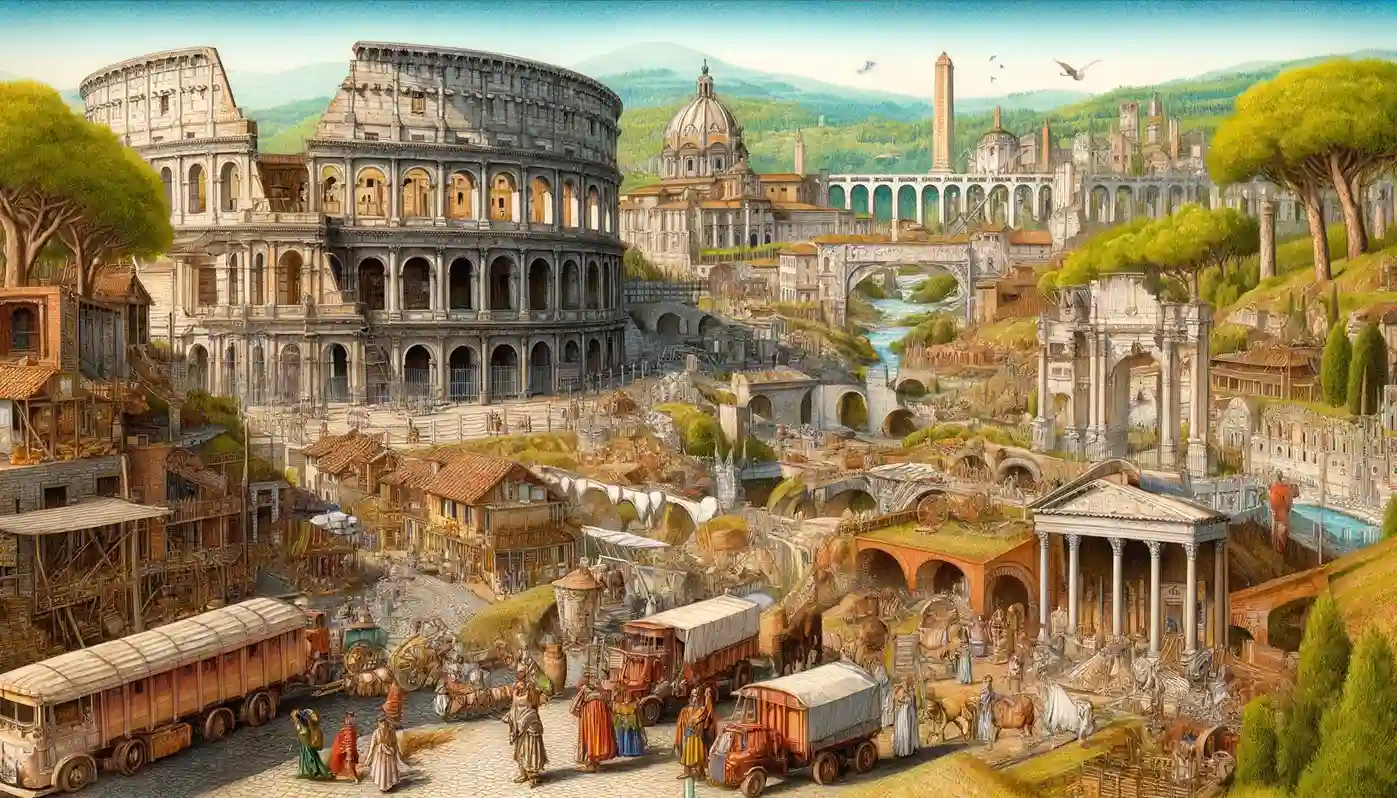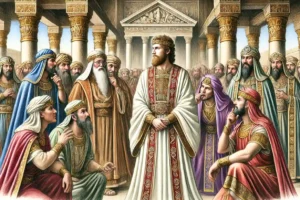
The Roman Empire: A Pinnacle of Ancient Civilization
The Roman Empire, one of the most powerful and enduring empires in history, significantly shaped the ancient world through its military conquests, governance, and cultural influence.
- Founding: Established in 27 BC by Augustus after the fall of the Roman Republic.
- Peak: At its height, the Roman Empire spanned three continents, including Europe, Africa, and Asia.
- Capital: Rome was the central hub of political, cultural, and economic activity.
- Language: Latin was the official language, with Greek commonly used in the eastern provinces.
- Government: Initially a principate with emperors holding supreme power, later transitioning to a dominate.
- Infrastructure: Renowned for its advanced engineering, including roads, aqueducts, and monumental architecture.
- Religion: Transitioned from polytheism to Christianity, becoming the state religion under Emperor Constantine.
- Decline: Fell in the West in 476 AD, while the Eastern Roman Empire (Byzantine Empire) continued until 1453 AD.
Historical Overview
The Roman Empire emerged from the Roman Republic, which was characterized by political upheaval and civil wars. In 27 BC, Augustus (formerly Octavian) established the Roman Empire, marking the beginning of a new era of imperial rule. The empire’s extensive territories were governed from Rome, the capital, and later from Constantinople in the East.

Governance and Society
The Roman Empire’s governance evolved over time. Initially, emperors exercised power while maintaining republican institutions. Augustus set the precedent for this model, known as the principate. Over time, the empire transitioned to the dominate, where emperors wielded more autocratic power.
Roman society was hierarchical, with a well-defined class system. Patricians (aristocrats) and plebeians (commoners) were the primary social classes. The empire was also notable for its extensive use of slavery, which played a crucial role in its economy.
Military and Expansion
The Roman military was the backbone of the empire’s expansion and stability. The legions, well-trained and disciplined, were instrumental in conquering vast territories. Key military achievements included:
- Conquests: Expansion into Britain, North Africa, the Middle East, and across Europe.
- Defense: Fortifications like Hadrian’s Wall in Britain and the Limes Germanicus along the Rhine and Danube rivers.
- Engineering: Construction of roads and bridges that facilitated troop movements and trade.
Infrastructure and Innovation
The Roman Empire is renowned for its engineering and architectural marvels. Notable contributions include:
- Roads: An extensive network of roads connected the empire, facilitating trade and communication.
- Aqueducts: Ingenious aqueducts supplied cities with fresh water, exemplified by the Pont du Gard in France.
- Architecture: Iconic structures like the Colosseum, the Pantheon, and Roman forums demonstrated advanced architectural techniques and grandeur.
Culture and Language
Latin was the lingua franca of the Western Roman Empire, while Greek was prevalent in the Eastern provinces. Roman culture was a blend of indigenous traditions and influences from conquered peoples, including the Greeks. This cultural amalgamation is evident in art, literature, and philosophy.
Roman law laid the foundation for many modern legal systems. The codification of laws, such as the Twelve Tables and later Justinian’s Code, ensured a consistent legal framework across the empire.
Religion
Religion in the Roman Empire evolved significantly. Initially polytheistic, worshiping a pantheon of gods and goddesses, the empire witnessed the rise of Christianity. Persecuted in its early stages, Christianity gradually gained acceptance and was legalized by Emperor Constantine in the early 4th century AD. By the end of the 4th century, Christianity had become the state religion, profoundly influencing Roman culture and society.
Decline and Fall
The decline of the Roman Empire was a complex process influenced by various factors:
- Economic Troubles: Inflation, heavy taxation, and reliance on slave labor weakened the economy.
- Military Issues: Pressure from barbarian invasions, such as the Visigoths, Vandals, and Huns, strained the empire’s defenses.
- Political Instability: Frequent changes in leadership and internal power struggles undermined stability.
- Division: The empire was divided into Western and Eastern halves in 285 AD by Emperor Diocletian, leading to administrative and strategic challenges.
The Western Roman Empire officially fell in 476 AD when the last emperor, Romulus Augustulus, was deposed by the Germanic chieftain Odoacer. However, the Eastern Roman Empire, known as the Byzantine Empire, continued to thrive until the fall of Constantinople in 1453 AD.
Conclusion
The Roman Empire’s legacy is vast and enduring, influencing modern governance, law, engineering, architecture, language, and religion. Its historical significance lies not only in its military conquests and political power but also in its cultural and intellectual contributions, which have shaped Western civilization for centuries.



